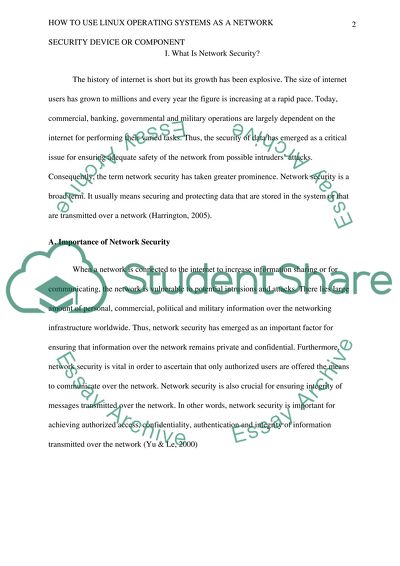Cite this document
(“Project Paper: How to Use Linux Operating Systems as a Network Essay”, n.d.)
Project Paper: How to Use Linux Operating Systems as a Network Essay. Retrieved from https://studentshare.org/information-technology/1487263-project-paper-how-to-use-linux-operating-systems-as-a-network-security-device-or-component
Project Paper: How to Use Linux Operating Systems as a Network Essay. Retrieved from https://studentshare.org/information-technology/1487263-project-paper-how-to-use-linux-operating-systems-as-a-network-security-device-or-component
(Project Paper: How to Use Linux Operating Systems As a Network Essay)
Project Paper: How to Use Linux Operating Systems As a Network Essay. https://studentshare.org/information-technology/1487263-project-paper-how-to-use-linux-operating-systems-as-a-network-security-device-or-component.
Project Paper: How to Use Linux Operating Systems As a Network Essay. https://studentshare.org/information-technology/1487263-project-paper-how-to-use-linux-operating-systems-as-a-network-security-device-or-component.
“Project Paper: How to Use Linux Operating Systems As a Network Essay”, n.d. https://studentshare.org/information-technology/1487263-project-paper-how-to-use-linux-operating-systems-as-a-network-security-device-or-component.


